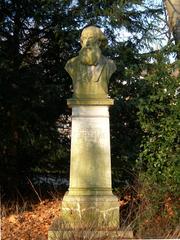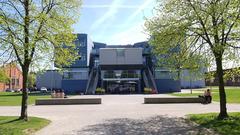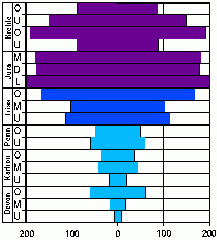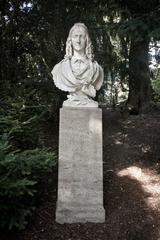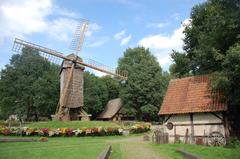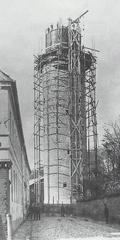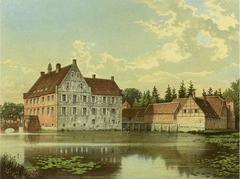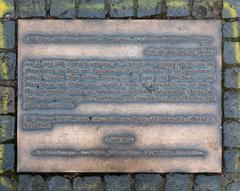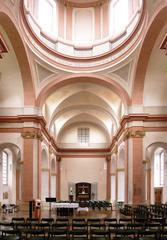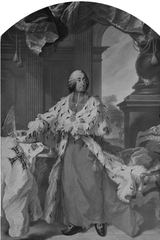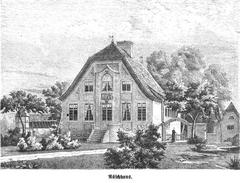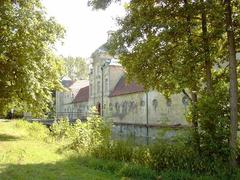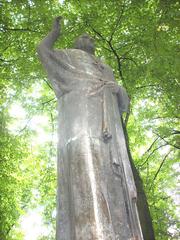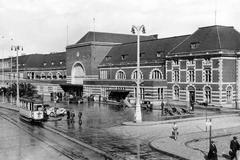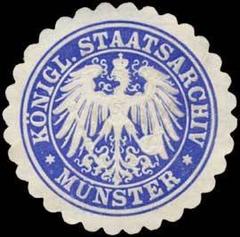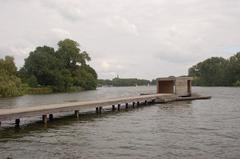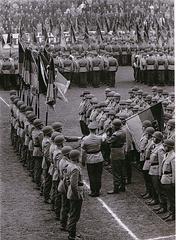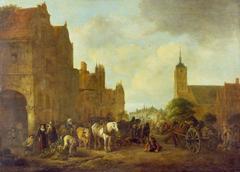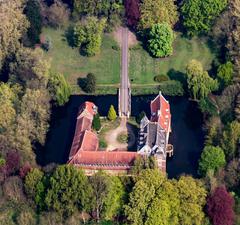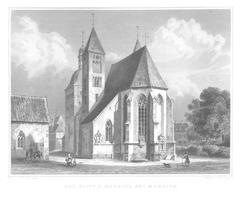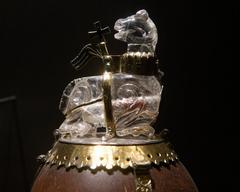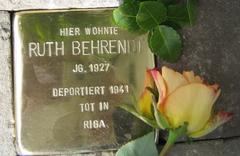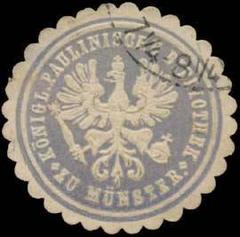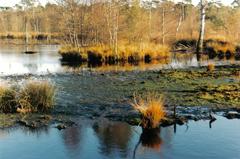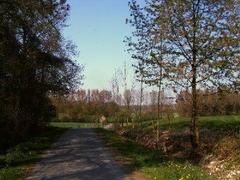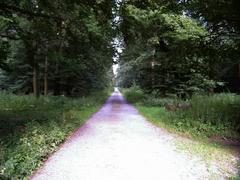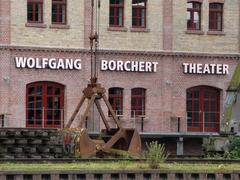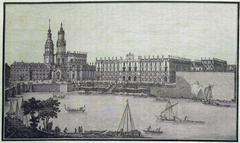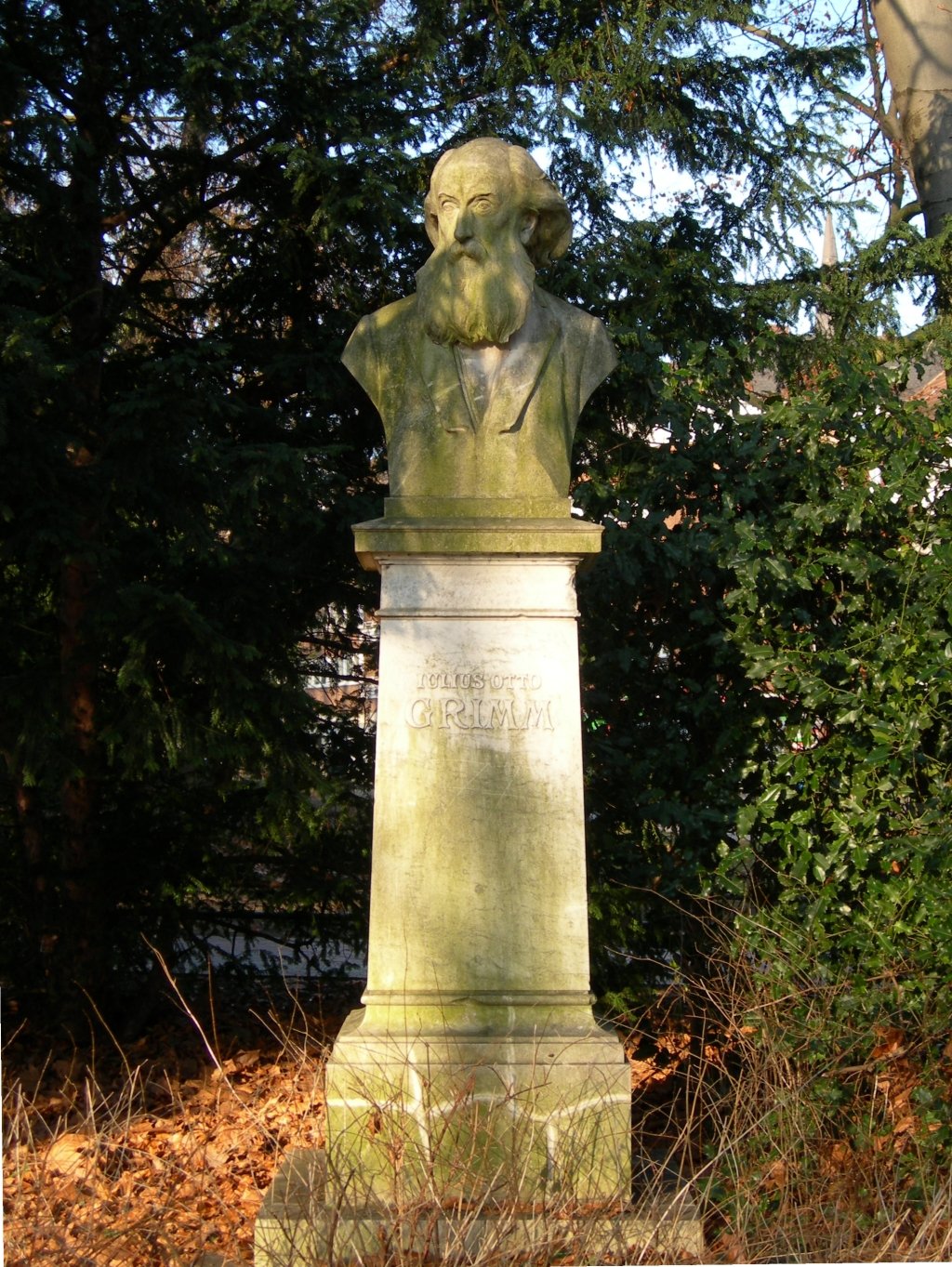
Julius Otto Grimm Monument in Münster: Complete Visiting Guide, History, and Cultural Insights
Date: 14/06/2025
Introduction
In the heart of Münster, Germany, the Julius Otto Grimm Monument stands as a distinguished tribute to one of the 19th century’s most influential composers, conductors, and educators. Julius Otto Grimm (1827–1903) left an indelible mark on Münster’s musical and cultural landscape, fostering connections with luminaries such as Johannes Brahms and the Schumanns. This guide presents all you need to plan your visit—covering historical context, practical visitor information, accessibility, and the monument’s role in Münster’s ongoing artistic life.
Whether you are a music enthusiast, a student of German culture, or a traveler seeking peaceful and historically significant sites, the Julius Otto Grimm Monument offers a unique window into Münster’s rich artistic heritage. The monument is accessible year-round and free of charge, located within the scenic Kreuzschanze park on the Promenade, a popular pedestrian and cycling route encircling the old city.
For those wishing to deepen their understanding, digital exhibitions and archival collections provided by the University of Münster offer interactive experiences and rare documents. Special events, commemorations, and local tours further connect visitors to the vibrant traditions of Münster’s musical scene. Stay updated on upcoming events and tours by visiting Münster’s official tourism resources or downloading the Audiala app for curated audio guides and notifications.
For a comprehensive exploration of Julius Otto Grimm’s influence and Münster’s artistic history, reliable resources include the University of Münster digital exhibition, Münster Marketing, University and State Library Grimm Collection, and Wikipedia.
Who Was Julius Otto Grimm?
Julius Otto Grimm, born in Pernau (now Pärnu, Estonia), was a German composer, conductor, and music educator whose career flourished in Münster from 1860 until his death in 1903. Overcoming early adversity, Grimm studied philology, philosophy, and music, later forging close friendships and artistic collaborations with Romantic-era greats such as Johannes Brahms, Clara Schumann, and Joseph Joachim.
As conductor of the Musikverein Münster and the Münsterische Liedertafel, Grimm elevated the city’s concert scene, organizing over 1,500 programs and attracting renowned performers to Münster. His own compositions, marked by clarity and expressive depth, are valued by scholars and enthusiasts alike. Grimm’s mentorship and leadership bridged religious and cultural divides, shaping Münster’s vibrant cultural identity (Wikipedia; ulb.uni-muenster.de).
The Julius Otto Grimm Monument
Location and Accessibility
The Julius Otto Grimm Monument is situated at Kreuzschanze on the Promenade, a tranquil, tree-lined belt that rings Münster’s historic center. The site is easily accessible on foot or by bicycle, and public transportation from Münster Hauptbahnhof (main railway station) provides a short, pleasant route. For drivers, several public parking garages—such as Stadthausgarage and Ludgeristraße—are within walking distance.
The Promenade is wheelchair- and stroller-friendly, with smooth, paved paths and benches throughout the park. The monument is well signposted, and its proximity to other cultural landmarks makes it an ideal stop on a city walking tour (verbaliter.de).
Visiting Hours and Tickets
- Hours: The monument is located outdoors and is accessible 24 hours a day, year-round.
- Admission: There is no entrance fee; the site is open to the public at all times.
Description and Artistic Features
The monument consists of a bronze bust of Julius Otto Grimm atop a stone pedestal, capturing his dignified and contemplative character. The pedestal is inscribed with Grimm’s name, dates, and a brief dedication, clearly distinguishing him from the Brothers Grimm. The serene Kreuzschanze setting, with mature trees and benches, provides a peaceful environment for reflection and appreciation of local heritage (allesmuenster.de).
Special Events and Guided Tours
- Events: The monument is a focal point for annual commemorations on Grimm’s birth and death anniversaries, featuring performances by local choirs and orchestras, as well as wreath-laying ceremonies.
- Guided Tours: While no regular tours focus exclusively on the monument, Münster’s tourism office offers city walks that include the Promenade and its notable sculptures.
- Digital Resources: The University of Münster’s digital exhibition provides self-guided tours and interactive resources for in-depth learning (julius-otto-grimm.uni-muenster.de).
Cultural and Musical Significance
Julius Otto Grimm’s contributions to Münster’s musical life were profound. He fostered professional and amateur music-making, organized acclaimed concerts, and brought national prestige to the city through collaborations with Brahms and other leading composers (ulb.uni-muenster.de). The monument stands not only as a memorial but as an active site of local cultural life, central to musical commemorations and educational programs.
Nearby Attractions
- Annette von Droste-Hülshoff Sculpture: Just steps away from the Grimm monument, honoring another of Münster’s literary and cultural icons.
- Zentralfriedhof: The city cemetery houses Grimm’s family grave near the Himmelreichallee entrance, marked by a distinctive monument.
- Promenade: The circular parkway is perfect for walking or cycling, linking a range of historical and artistic sites.
- St. Paulus Cathedral and Prinzipalmarkt: Key landmarks nearby, showcasing Münster’s architectural and cultural richness.
Practical Visitor Tips
- Best Times: Spring and summer offer pleasant weather and lush park scenery; early mornings and late afternoons are quieter.
- Accessibility: The site is fully accessible for wheelchairs and strollers.
- Safety: The park is safe and well-lit, suitable for visits throughout the day.
- Photography: Visit in the early morning or late afternoon for the best natural light and scenic photo opportunities.
- Events: Check Münster’s cultural calendar and the University of Münster digital exhibition for events and digital resources.
Frequently Asked Questions (FAQ)
What are the Julius Otto Grimm Monument visiting hours?
The monument is accessible 24/7, year-round.
Is there an entrance fee?
No, admission is free for all visitors.
Are guided tours available?
City walking tours offered by Münster Tourism often include the monument, and digital self-guided tours are available online.
How do I get there by public transport?
From Münster Hauptbahnhof, it’s a 15–20 minute walk to the Promenade and Kreuzschanze.
Is the area wheelchair accessible?
Yes, paved paths and gentle gradients ensure easy access.
Visual Highlights and Media
High-quality images and virtual tours are available through the University of Münster’s digital exhibition (julius-otto-grimm.uni-muenster.de). When sharing photos online, use descriptive alt text such as “Bronze bust of Julius Otto Grimm at Kreuzschanze, Münster” to enhance accessibility and SEO.
Directions and Map Resources
Locate “Kreuzschanze, Münster” or “Julius Otto Grimm Büste” using OpenStreetMap or Google Maps. The Promenade is a continuous green belt with multiple accessible entry points.
Further Reading and Official Resources
- University of Münster digital exhibition
- Münster Marketing: Events and Tourism
- University and State Library Münster: Grimm Collection
- Wikipedia: Julius Otto Grimm
- Repertoire Explorer: Grimm Biography (PDF)
- Alles Münster: Grimm and Musical Heritage
- Wiki Münster: Julius Otto Grimm
Summary and Visitor Recommendations
The Julius Otto Grimm Monument offers a meaningful glimpse into Münster’s musical and cultural history. With its picturesque location on the Promenade, year-round accessibility, and proximity to other cultural sites, it invites visitors to explore the city’s vibrant heritage. The monument is not only a tribute to Grimm’s enduring legacy but also an active part of Münster’s ongoing celebration of the arts.
For an enriched experience, combine your visit with nearby landmarks, consult digital resources, and participate in local events. Download the Audiala app for guided audio tours, event alerts, and practical tips to make the most of your journey through Münster’s artistic landscape.
Call to Action:
Plan your visit today and immerse yourself in Münster’s remarkable musical tradition. For more information on current events, guided tours, and practical travel tips, visit Münster’s official tourism site and the University of Münster’s Grimm Collection. Download the Audiala app and follow us on social media to stay connected with Münster’s cultural scene.
Sources
- University of Münster digital exhibition
- Münster Marketing: Events and Tourism
- University and State Library Münster: Grimm Collection
- Wikipedia: Julius Otto Grimm
- Repertoire Explorer: Grimm Biography (PDF)
- Alles Münster: Grimm and Musical Heritage
- Wiki Münster: Julius Otto Grimm
- Verbaliter: Grimm Monument Inscriptions
- Münstereuropa Blog: Grimm Sculpture
- OpenStreetMap
- Google Maps
